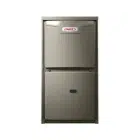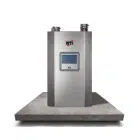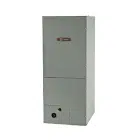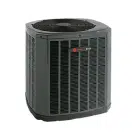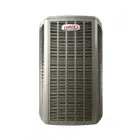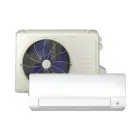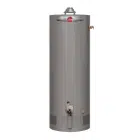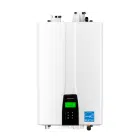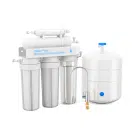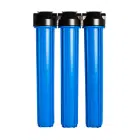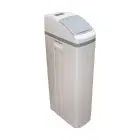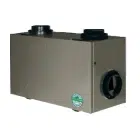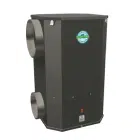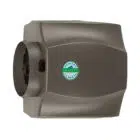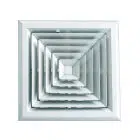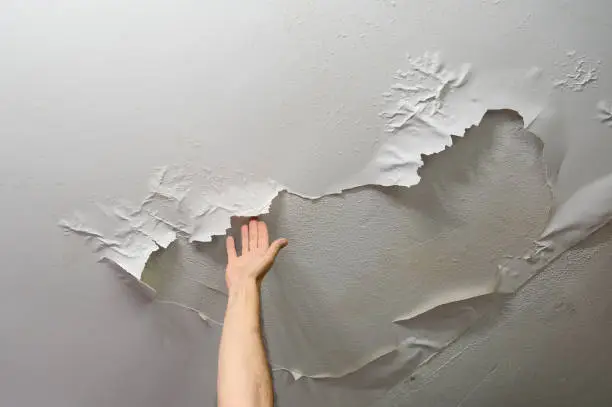
Table of Contents
Maintaining the perfect humidity level in your home isn’t just about comfort—it’s about creating a healthy living space that enhances your well-being and even has implications for your energy costs. In Canada, where the climate varies widely from season to season, achieving the ideal humidity in your house can feel like a quest. But fear not, understanding and adjusting your home humidity levels can be straightforward with the right knowledge and tools.
Understanding Humidity
First things first: what exactly is humidity? In simple terms, it refers to the amount of water vapor present in the air. Relative humidity, the term we most commonly encounter, measures the percentage of moisture in the air relative to what it can hold at a certain temperature. When the air holds all the moisture it can, we hit 100% relative humidity — that’s when fog and dew grace our mornings.
But why does humidity in our houses matter? Well, if the air is too moist or too dry, it can have various negative effects, ranging from discomfort to health issues and even damage to your home. For instance, high humidity can lead to mold growth and exacerbate allergy symptoms, while low humidity can cause dry skin and respiratory irritation.
Ideal Humidity in House
When it comes to setting the ideal humidity in house, there’s a sweet spot that offers the best balance for comfort, health, and the preservation of your home. Experts recommend keeping indoor relative humidity between 30% and 50%. Within this range, you can avoid the common pitfalls associated with air that’s too moist or too dry.
Why is this range ideal? At humidity levels below 30%, the air is too dry, which can lead to respiratory irritation, increased likelihood of colds and infections, and discomfort such as dry skin and eyes. Wood furniture and flooring can also suffer, as they might crack or warp in dry conditions. On the other end, when humidity surpasses 50%, your home becomes a breeding ground for mold, mildew, and dust mites, all of which pose health risks, especially for those with allergies or asthma.
However, the “ideal” humidity in house can fluctuate based on personal preference, health needs, and even the specific contents of your home. Some might find a slightly higher humidity level more comfortable, while others might prefer it a bit drier, especially if someone in the household is allergic to dust mites which thrive in higher humidity.
Home Humidity Levels: Signs of Imbalance
Identifying whether your home humidity levels are out of balance is crucial for maintaining a comfortable and healthy living environment. Here’s how you can tell:
Signs of High Humidity
- Stuffy Air: The living space may feel uncomfortably warm and airless.
- Condensation: Windows and glass surfaces exhibit persistent fogging or water beads.
- Mold and Mildew: Musty odors or visible mold and mildew spots indicate excessive moisture.
- Peeling Wallpaper or Paint: Excess moisture can cause wallpaper to bubble or paint to peel and blister.
Signs of Low Humidity
- Static Electricity: Increased static shocks are a common indicator of low indoor humidity.
- Dry Skin and Mucous Membranes: You might experience dry, irritated skin, eyes, nose, or throat.
- Warped Wood: Wooden furniture or floors may show signs of shrinking, cracking, or warping.
- Peeling Wallpaper: Just as with high humidity, low humidity can cause wallpaper edges to peel or curl.
Humidifiers in Canada play a pivotal role in addressing these imbalances by adding essential moisture to your indoor air, especially during the dry months or in naturally arid climates. By carefully adjusting a humidifier’s settings, you can maintain the ideal humidity level in your house, alleviating the discomfort of dry air and preventing the adverse effects of low humidity on your health and home. They are effective tools in creating a balanced indoor environment, promoting comfort, and safeguarding your living space.
Find more information about the positive effects of using a humidifier in your home in our previous article via the link below.
https://thehvacservice.ca/positive-impacts-of-using-a-humidifier-in-your-home/
Measuring Home Humidity Levels
Monitoring your home’s humidity levels is straightforward with the use of a hygrometer. Here’s how you can effectively measure and track indoor humidity:
- Choose Your Hygrometer: Select a hygrometer based on your preference—digital models offer more features and ease of reading, while analog models provide a classic look without the need for batteries.
- Place the Hygrometer: For accurate readings, position your hygrometer in a central location away from direct sunlight, drafts, and any humidity sources like kitchens or bathrooms.
- Read Regularly: Check the hygrometer at least once a day to monitor the humidity levels. Consistency is key to understanding the fluctuations and trends in your indoor environment.
- Record the Readings: Keeping a log of daily readings can help you identify patterns or changes over time, allowing for more informed decisions on when to adjust humidity levels.
By incorporating these steps into your routine, you can effectively monitor and maintain the ideal humidity levels in your home, enhancing comfort and health year-round.
Conclusion
In conclusion, understanding and managing the humidity in house is essential for creating a comfortable, healthy living environment and preserving the integrity of your home’s structure and furnishings. By recognizing the signs of humidity imbalance, measuring and adjusting your home’s humidity levels, and considering seasonal changes, you can maintain an ideal indoor atmosphere.
We invite you to explore our selection of humidifiers to find the perfect solution for your home. Visit our website to discover our range of products designed to help you achieve and maintain the ideal humidity level, ensuring your home is a comfortable sanctuary year-round.
Frequent Asked Questions
What are the optimal humidity levels for my home?
The ideal indoor humidity level, typically recommended to be between 30% and 60%, is not arbitrary. This range is carefully chosen to strike a balance between health, comfort, and the preservation of your home. At levels below 30%, you might encounter problems like dry skin, irritated respiratory pathways, and an increased likelihood of static electricity. Conversely, levels above 60% can create environments conducive to mold growth and dust mites, potentially damaging your home and impacting your health. Seasonal adjustments are crucial; for instance, during the cold Canadian winters, aiming for the lower end of the spectrum can prevent window condensation and related mold risks, while in the humid summer months, higher levels may still prevent the air from feeling uncomfortably dry.
How can I measure the humidity level in my home?
Accurately gauging your home’s humidity is vital for maintaining optimal living conditions. A hygrometer, available in analog or digital formats, is your go-to tool for this task. When placing a hygrometer, avoid locations near kitchens, bathrooms, direct sunlight, or air vents, as these can skew readings. Regular monitoring is key—consider checking at the same time daily to track fluctuations effectively. Digital models may offer additional features like data logging or alerts when levels exceed preset thresholds. By understanding your home’s humidity patterns, you can make informed decisions about deploying humidifiers, dehumidifiers, or adjusting your HVAC system to maintain ideal conditions.
What are the signs of high indoor humidity?
Recognizing the signs of excessive indoor humidity is crucial for timely intervention. Beyond the obvious discomfort of a muggy atmosphere, there are tangible indicators like condensation on windows, a persistent musty odor (a telltale sign of mold or mildew), and noticeable dampness on walls or floors. Over time, high humidity can inflict significant damage on your home, from peeling paint and wallpaper to compromised structural integrity due to wood rot or metal corrosion. Addressing high humidity swiftly with dehumidifiers, improved ventilation, and addressing root causes like leaks can mitigate these risks and safeguard both your health and home.
What are the effects of low humidity in my home?
While high humidity is often discussed, low humidity can be equally detrimental, particularly in colder climates. Symptoms of low indoor humidity include physical discomforts such as dry, itchy skin, and increased susceptibility to respiratory ailments. The static electricity that zaps you when touching metal objects is another clue. From a structural perspective, dry air can cause wood to crack and warp—this includes hardwood floors, musical instruments, and furniture. Moreover, the longevity of paper, books, and artwork can be compromised. Using humidifiers, introducing indoor water features, or even maintaining a consistent routine of air-drying laundry indoors can help elevate and stabilize indoor humidity levels, enhancing both comfort and home preservation.
How can I increase the humidity level in my home?
Elevating your home’s humidity can enhance comfort and health, especially in arid or cold conditions. Whole-house humidifiers integrate with your HVAC system to distribute moisture evenly, while portable units offer localized solutions. Additionally, simple activities like leaving the bathroom door open during showers, maintaining indoor houseplants (which transpire water vapor), or even setting out bowls of water near heat sources can incrementally increase indoor humidity. It’s about finding the right balance that suits your space and lifestyle, ensuring the humidity level is conducive to a healthy and comfortable living environment.
How can I decrease high humidity in my home?
Addressing elevated humidity is essential for preventing the associated health risks and property damage. Effective strategies include using dehumidifiers, which come in various sizes to suit different spaces, and ensuring your home is well-ventilated, particularly in areas like kitchens and bathrooms where moisture accumulates. Air conditioning also plays a dual role in cooling and reducing indoor moisture. In chronic high-humidity situations, investigating potential causes like poor insulation, leaks, or inadequate ventilation is crucial. Correcting these issues can provide a more permanent solution to humidity problems, enhancing your home’s livability and longevity.
What quick solutions can adjust my home's humidity levels?
Quick fixes for adjusting humidity include using portable humidifiers to add moisture or dehumidifiers and exhaust fans to remove excess humidity. These solutions can be effective for immediate relief, but addressing the root causes of humidity imbalances is essential for long-term stability and comfort.
How does humidity affect my health and my home's condition?
The right humidity level can mitigate various health issues, including respiratory problems and allergies, and prevent damage to your home, such as mold growth or structural deterioration due to moisture. Maintaining the recommended humidity range is crucial for promoting a healthy living environment and protecting your property.
What should I consider when buying a humidifier or dehumidifier?
The selection of a humidifier or dehumidifier should be a thoughtful process, considering various factors like the size of the area, unit capacity, energy efficiency, and specific features that align with your needs. For instance, a whole-house humidifier offers a comprehensive solution for consistent humidity control but requires integration with your HVAC system and sufficient maintenance. On the other hand, portable humidifiers offer flexibility and are ideal for targeted humidity control in smaller spaces or specific rooms. Key features to look for include automatic humidity level control, ease of cleaning, quiet operation, and energy efficiency. Understanding your specific needs and the unique characteristics of your living space will guide you in choosing the right device that offers effectiveness, convenience, and energy efficiency.
How do seasonal changes affect my home's humidity levels?
Seasonal changes dramatically affect indoor humidity levels, necessitating different strategies throughout the year. In the colder months, indoor air tends to be drier, especially when heating systems are in use, which can strip moisture from the air. A humidifier can counteract this dryness, contributing to a healthier indoor environment. Conversely, in the warmer months, higher outdoor humidity can lead to increased indoor humidity, potentially necessitating the use of dehumidifiers or air conditioning to maintain comfort and prevent moisture-related issues. Additionally, activities like cooking, bathing, and laundry can all influence indoor humidity levels and should be managed accordingly with proper ventilation and use of exhaust fans. Understanding and adapting to these seasonal nuances will enable you to maintain an ideal indoor climate throughout the year, ensuring comfort, preserving health, and protecting your home.
Share

